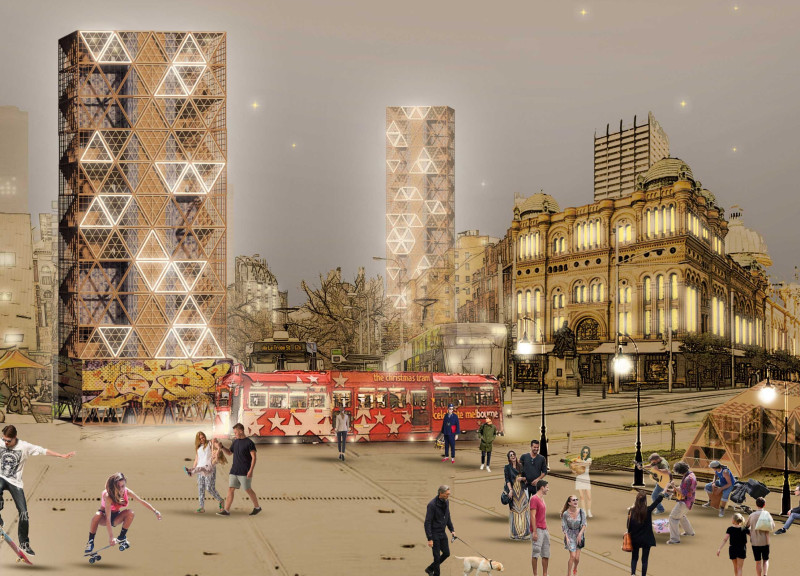5 key facts about this project
The architectural project, titled "Encounter at the Station," presents a cohesive approach to mixing transit-oriented development with affordable housing solutions in an urban setting. This design responds directly to the challenges of high-density environments, focusing on creating functional living spaces that enhance community interaction. By integrating housing with various public amenities, the project seeks to foster a sense of belonging and accessibility among residents.
The main function of this project is to provide an affordable and sustainable living option for urban dwellers. Its urban location amplifies its relevance, as it is strategically placed near transportation networks, allowing for easy commute options. The architecture features modular living units that can be adapted to individual needs, highlighting flexibility in design.
The project includes key elements such as shared common areas and green spaces that enhance the quality of life for residents. Communal gardens, recreational lounges, and collaborative workspaces are prominently positioned to encourage social engagement. The spatial organization within the project emphasizes the balance between public and private spheres, offering residents the ability to connect with others while maintaining their own space.
One notable aspect of this design is the use of triangular geometries, which not only serve aesthetic purposes but also optimize space efficiency. The triangular forms create a unique structural language that sets this project apart from conventional designs. This approach allows for clever configuration of residential units while maintaining structural integrity, making the most of limited urban footprints.
The material selection further differentiates the project. Sustainable materials such as timber, reinforced concrete, glass, and metal are thoughtfully chosen to reflect ecological sensibilities while ensuring durability. The extensive use of large glass panels maximizes natural light penetration, fostering a healthier living environment and reducing reliance on artificial lighting.
With a focus on modularity, the design facilitates future changes, allowing spaces to evolve in response to demographic shifts or changing societal needs. This adaptability is a crucial feature in an urban landscape where requirements frequently fluctuate.
To explore further details of "Encounter at the Station," including various architectural plans, sections, and design specifics, readers are encouraged to review the project's presentation for a comprehensive understanding of its architectural ideas and overall vision.























